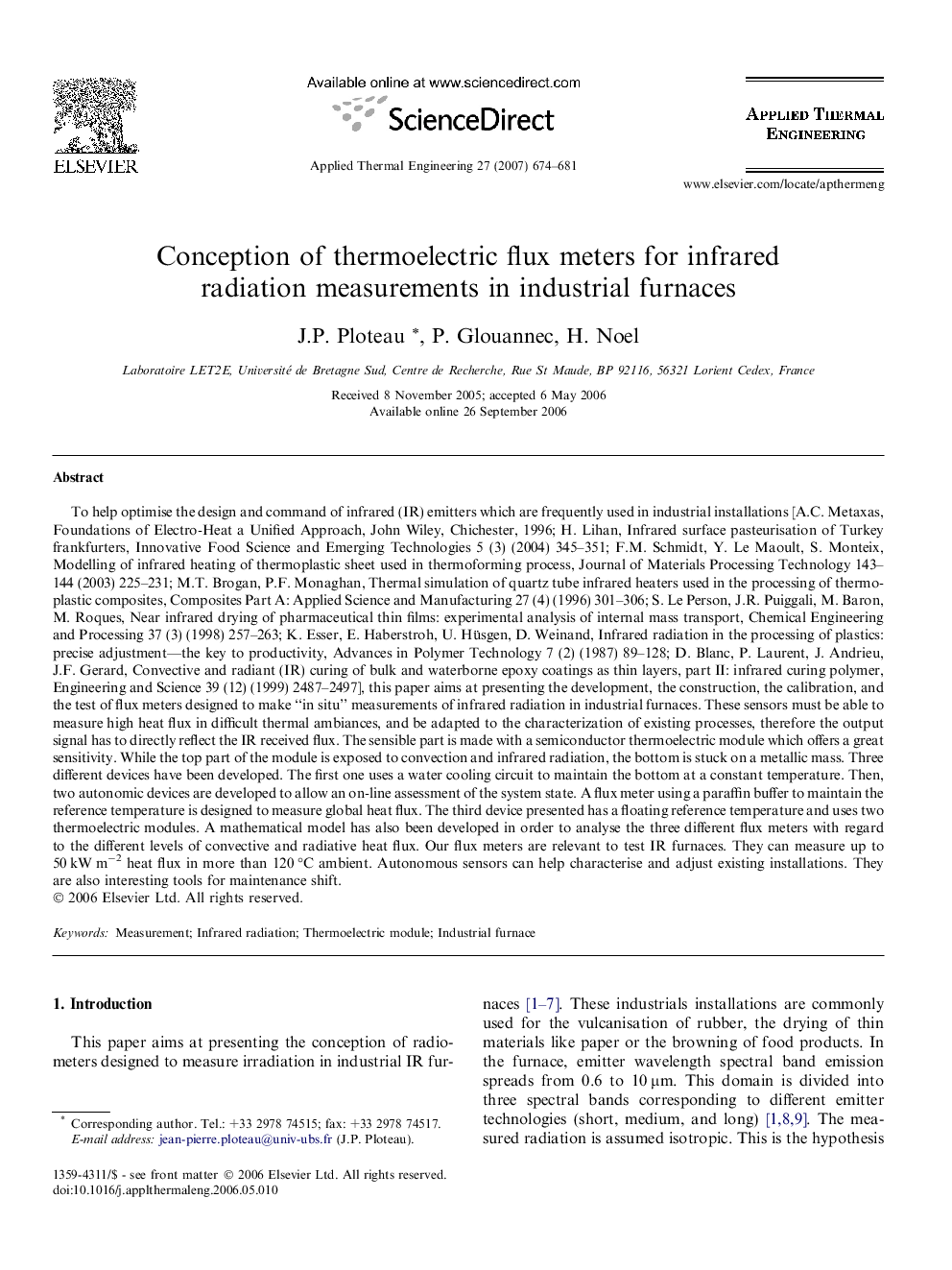| Article ID | Journal | Published Year | Pages | File Type |
|---|---|---|---|---|
| 649170 | Applied Thermal Engineering | 2007 | 8 Pages |
Abstract
To help optimise the design and command of infrared (IR) emitters which are frequently used in industrial installations [A.C. Metaxas, Foundations of Electro-Heat a Unified Approach, John Wiley, Chichester, 1996; H. Lihan, Infrared surface pasteurisation of Turkey frankfurters, Innovative Food Science and Emerging Technologies 5 (3) (2004) 345-351; F.M. Schmidt, Y. Le Maoult, S. Monteix, Modelling of infrared heating of thermoplastic sheet used in thermoforming process, Journal of Materials Processing Technology 143-144 (2003) 225-231; M.T. Brogan, P.F. Monaghan, Thermal simulation of quartz tube infrared heaters used in the processing of thermoplastic composites, Composites Part A: Applied Science and Manufacturing 27 (4) (1996) 301-306; S. Le Person, J.R. Puiggali, M. Baron, M. Roques, Near infrared drying of pharmaceutical thin films: experimental analysis of internal mass transport, Chemical Engineering and Processing 37 (3) (1998) 257-263; K. Esser, E. Haberstroh, U. Hüsgen, D. Weinand, Infrared radiation in the processing of plastics: precise adjustment-the key to productivity, Advances in Polymer Technology 7 (2) (1987) 89-128; D. Blanc, P. Laurent, J. Andrieu, J.F. Gerard, Convective and radiant (IR) curing of bulk and waterborne epoxy coatings as thin layers, part II: infrared curing polymer, Engineering and Science 39 (12) (1999) 2487-2497], this paper aims at presenting the development, the construction, the calibration, and the test of flux meters designed to make “in situ” measurements of infrared radiation in industrial furnaces. These sensors must be able to measure high heat flux in difficult thermal ambiances, and be adapted to the characterization of existing processes, therefore the output signal has to directly reflect the IR received flux. The sensible part is made with a semiconductor thermoelectric module which offers a great sensitivity. While the top part of the module is exposed to convection and infrared radiation, the bottom is stuck on a metallic mass. Three different devices have been developed. The first one uses a water cooling circuit to maintain the bottom at a constant temperature. Then, two autonomic devices are developed to allow an on-line assessment of the system state. A flux meter using a paraffin buffer to maintain the reference temperature is designed to measure global heat flux. The third device presented has a floating reference temperature and uses two thermoelectric modules. A mathematical model has also been developed in order to analyse the three different flux meters with regard to the different levels of convective and radiative heat flux. Our flux meters are relevant to test IR furnaces. They can measure up to 50 kW mâ2 heat flux in more than 120 °C ambient. Autonomous sensors can help characterise and adjust existing installations. They are also interesting tools for maintenance shift.
Related Topics
Physical Sciences and Engineering
Chemical Engineering
Fluid Flow and Transfer Processes
Authors
J.P. Ploteau, P. Glouannec, H. Noel,
